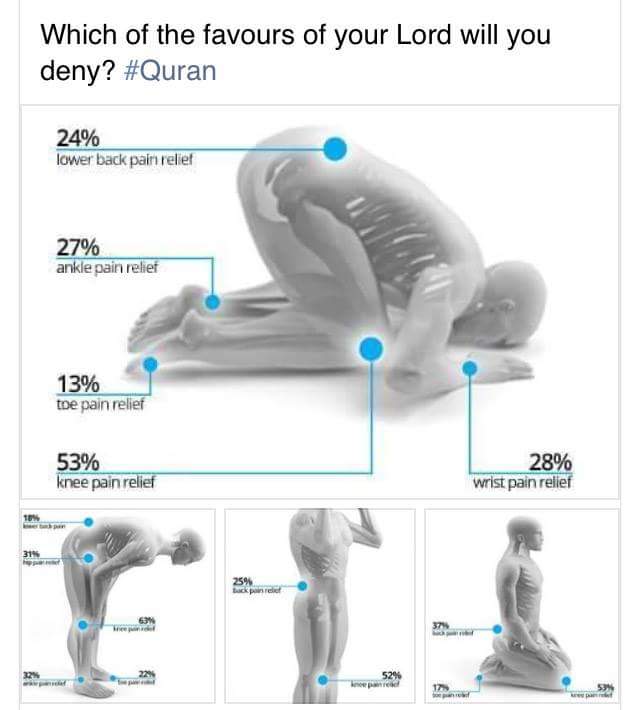Scientific benefits of Salah(NAMAZ)
Salah is used as a means of seeking solace, forgiveness, and peace through invoking Allah’s (SWT) assistance; it serves as food for the soul. However, the benefits of Salah do not end with the spiritual domain but in fact, encompass the physical domain as well.
Customary Salah involves various physical movements and positions, which have been scientifically proven to have medical and health benefits. Even though Muslims generally offer their daily prayers out of their religious duty, however, modern day science has shed light on the physical advantages of offering Salah. Here are a few of them:
Improves Blood Circulation
The different positions during the Salah help in improving the overall blood flow in the body. People have a lot of issues when it comes to blood pressure where their blood flow is either too high or too low to a certain region in the body. In these cases, the Salah movements help in regulating the blood flow to all parts of the human body. During the Ruku position, for example, blood flow is regulated in the upper body and during Tashahhud, the blood flow in the lower body is regulated.


Improves Digestion
According to scientific studies, the Salah also helps in digestion of the body. For example, during the Quud state, which is basically when the men are sitting down with one foot curled underneath them and the women sit with both their feet under them, the posture is such that it enables and facilitates digestion. It improves liver functions and relaxes the intestines, which in turn facilitates bowel movement in the body. Salah can also help alleviate cases of constipation and overeating.
Relieves Back Pain and Joint Pain
The position of the body during prostration and bowing helps open up and ease the joints. Regular use of the joints keeps them healthy and functioning. Moreover, the position of the Ruku helps in alleviating pain in the lower back by relaxing the ligaments and muscles (similar to yoga). It also helps ease the pain in the spinal cord and the hip joints. Through the vertebral relaxation, backache and vertebral illnesses can also be avoided. The Salah overall relaxes the shoulder joints, elbows, knees, ankles and the hip.
Cardiovascular Health
In essence, Salah is also a form of exercise and it increases a person’s metabolism, which basically improves a person’s overall cardiovascular health. Every Salah that you offer is similar to exercising on a daily basis which improves the overall functioning of the organs in the body and regulates the secretion of glands and blood flow in the body.
Body Yoga
According to modern science, one of the healthiest forms of exercise is yoga and it has been found that the movements during Salah resemble the movements found in the domain of yoga. Yoga, like Salah, rejuvenates the overall bodily mechanisms. It not only aims to keep a person physically fit but also works towards improving a person’s mental well-being. Yoga therapy aims to bring harmony in a person’s life by bringing together all aspects of his/her life including physical, social, spiritual, psychological etc. and creating a full circle of harmony. This is precisely what the Salah aims to do; bring about utter and complete harmony and peace within an individual. Salah also serves as a substitute for stress and anxiety, which yoga also combats.
Overall Cleanliness and Hygiene
One of the most obvious benefits of the daily Salah is the overall cleanliness and purity that the individual achieves. It keeps you in a constant state of purity. Before every Salah, a Muslim must perform ablution, which is cleansing of the mouth, nose, face, ears, neck, hands, arms and feet. Staying in a constant state of cleanliness leads to healthier skin and an overall healthy hygiene. It rids one of germs, allergens and various forms of infections and diseases, which are caused by poor hygiene.



No comments:
Post a Comment